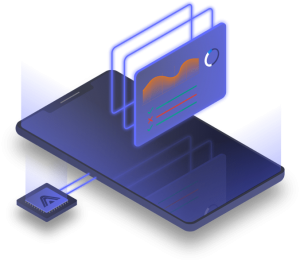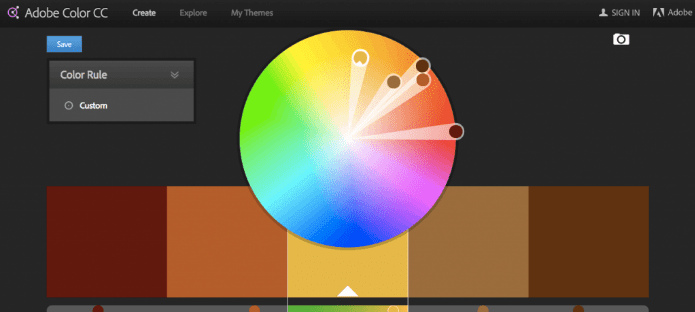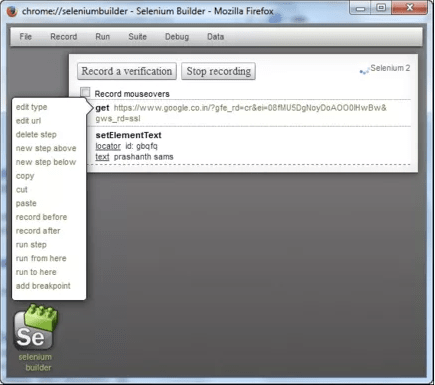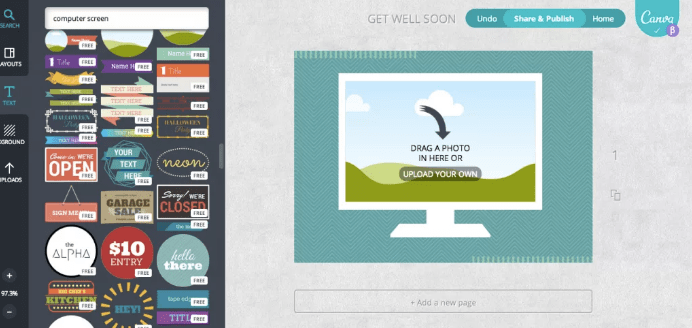Top 10 testing tools we love
After testing millions of lines of code this year, obsessing over quality, we at Abstracta are looking forward to testing something a bit different: Thanksgiving dinner! Checking that this year’s stuffing, turkey, potatoes, green beans, pumpkin pie, etc. haven’t suffered any regressions from last year is a top priority! We plan to run multiple tests on every dish (to maximize coverage as much as possible, of course)! Then like the good testers we are, we’ll report back the results and give thanks.
Kidding aside, this year we have so many things for which to be grateful! 2015 has been one for the books at Abstracta. We were able to expand our team of testers with professionals from all over the world, we worked on challenging projects for outstanding clients, formed strong partnerships with industry leaders such as BlazeMeter, and got to attend some really cool events like TechCrunch Disrupt in SF! We’ve also realized how grateful we are for certain testing tools that without which we couldn’t be successful…
Infographic: The Top 10 Testing Tools That We’re Most Grateful for This Thanksgiving
Below, we will go into detail about each tool. They are listed in no particular order.

Apptim (Formerly Monkop)
Apptim is undoubtedly one of the best new mobile testing tools on the market. It’s free to download, and then you connect your mobile device and start testing your app through the tool, reporting any bugs you find and you can even push them to Jira. While you test your app, Apptim analyzes your mobile app performance and automatically creates a report with all the important data that it gathers about potential crashes, resource usage, power consumption, etc.

TestLink
TestLink is a powerful open source tool for test management. It allows you to create test cases, organize them into plans and projects, establish traceability requirements linking cases and system requirements, assign the execution of test cases, track them, generate reports, and more! Having a test management tool enables us, the testing team, to accompany the development process and not slow down the release of new versions. It also lets us easily manage and maintain a large number of test cases, distributing them among the test team, making design and execution more dynamic.
Selenium Builder
You can record test scripts for Selenium (a web browser automation tool) with this simple browser add-on. This is mainly useful when you are new to Selenium, once you’ve got plenty of practice, you can directly code your tests. This tool is so much better than working with the original Selenium IDE because it has more features, even the possibility to send your tests directly to the Selenium test cloud by Sauce Labs.
Mantis Bug Tracker
Mantis is an issue management system that enables you to manage the bugs found during test execution. This tool assures you that everyone involved is following the process for finding bugs in the corresponding life cycle and it also generates useful metrics for the project.
Fiddler
Fiddler is an HTTP debugger that helps to debug web applications by capturing network traffic between the browser and the server. Before the browser receives requests and responses, Fiddler enables you to inspect incoming and outgoing data to monitor and modify them. It also includes an event-based scripting subsystem, which can be extended by using any .NET Framework language. It’s also great because Fiddler and the HTTP replay options can help to troubleshoot client-side issues with web applications by making an offline copy of the test site. Our team has developed some extensions in order to generate a JMeter script from a Fiddler session.
Jing
Jing is a tool that we have always used for several years. It allows you to record video or take pictures of the entire screen or sections of it, enabling you to select a window or panel with a single click. Then, the images can be easily edited where you can add boxes, arrows, and text to add more information. The videos can then be adjusted by using Snagit and Camtasia. Our tester Fernanda noted that using Snagit, you can capture screenshots of the entire screen, even if it has a scroll, and it stores the entire sequence of screenshots for you.
nmon
A free tool to analyze AIX and Linux performance, nmon is helpful for presenting all the important performance tuning information on one screen and dynamically updating it. It does not consume many CPU cycles (usually below two percent and on newer machines, CPU usage is well below one percent). This tool is great because it provides the same amount of information that you would normally have to use five or six tools to get. We use it with nmon analyser, which processes all the data into very useful graphs.
Page Speed
This tool is essential for figuring out what exactly is slowing down a website on the client side and what to do about it. We enjoy using it because the information presented is very clear and easy to understand for testers and non-testers alike. Detailed explanations are given for why you should make each improvement and how it could be beneficial. It can also shed light on optimizations that you weren’t aware of before. For more on page speed optimization, check out our recent post.
BlazeMeter
When you need to optimize your system on the server side is when you need to use more powerful tools such as BlazeMeter. It’s a self-service, load and performance testing cloud, compatible with open source JMeter, the popular performance testing framework. It’s a great solution for both developers and QA as it provides an enterprise-grade, JMeter environment with unlimited load testing capacity, comprehensive, interactive real-time reporting and sophisticated result analysis and recommendations. We like it because it’s a cost-effective, straightforward process to get scripts running through its simple and intuitive interface. Also, its main advantage is that we don’t have to worry about the test infrastructure.
Taurus
We were so excited when this tool came out that we even wrote a whole post dedicated to it. To give a quick description, Taurus is a tool for easily generating scripts in JMeter, Grinder or Gatling in a more user-friendly way with its language based on JSON or YAML instead of XML. This enables people with less experience to generate scripts. One of its many benefits is that you can also use pre-existing scripts. As it was created by the creators of Blazemeter, you can also easily integrate with it.
In addition to our top 10 testing tools, there are also some other highly recommendable, non-testing tools that we just had to share:
Trello
Trello is a simple and useful tool in which many of our tasks are managed. You have boards with lists and post-its or as Trello calls them “cards” that you can attach to the lists. We usually have a “To Do”, “Doing”, “Waiting”, and “Done” list on each board, following the kanban methodology for getting things done. A task moves from list to list depending on which state it’s in. Some boards we have are dedicated to client projects, our marketing activities, etc. This tool is so helpful because it provides increased control and monitoring of team tasks, helping to assign and prioritize them according to a deadline.
Slack
Slack helps us minimize the number of emails we send between employees. There are several instant messaging channels that we have set up in order to discuss work and non-work related topics. There is even a built-in robot called Slackbot who helps keep notes and files! It’s fun because you can add a reaction to someone’s message with an emoji.
Canva
Canva has been our go-to design tool. It enables you to easily pick what type of graphic you want to make (from a Facebook cover page to an infographic) and is loaded with free graphics, text formats, layouts, templates, photos, fonts, etc. You can even upgrade to the business version in which it saves your brand’s logo, font, and colors for rapid production. The best thing about it is that it is extremely intuitive- no need to seek training to use it.
XMind
A free mind mapping and brainstorming software, we love to use it because mind maps are a great way to brainstorm and share information. This tool can capture ideas, clarify thinking, manage complex information, and promote team collaboration for higher productivity! It’s a great tool because you can draw them very quickly.
Adobe Kolor
It used to be called “Kuler,” but this tool is cooler than the rest (see what I did there?)! Kolor is an online app that helps you try out, choose, and save color schemes quickly. We used it for this infographic by browsing and selecting one of the Thanksgiving themes! It gives you the color in RGB and HEX so you can pass that info along to whoever is doing the design work (this tool is a great complement to Canva).

And besides tools, last but not least, we are grateful for developers (not because they put bugs in code), but because they are our allies in producing high-quality software and without them, our work wouldn’t make any sense.
That about wraps up just SOME of the things that we are grateful for this year! What are some other tools/things you would add to the list?
From all of us at Abstracta, Happy Thanksgiving!
Recommended for You
Introduction to Taurus: An Alternative to JMeter
Debugging in Production with OverOps
Tags In
Related Posts
What’s More Important: The Performance Testing Tool or the Tester?
What should we be more cautious about choosing: the tool we use or the person to run performance tests? Does the tool or the tester matter more for a good performance test? An aspect we always stress in performance testing is that the tools are…
Quality Sense Podcast: Sofia Palamarchuk – Mobile app performance
Finding new solutions for testing mobile performance on the client side In today’s Quality Sense episode, Federico Toledo sits down for a chat with a colleague and friend, Sofia Palamarchuk. She’s a Director and Board Member of Abstracta and the co-founder and CEO of Apptim,…
Search
Contents







 Abstracta
Abstracta
